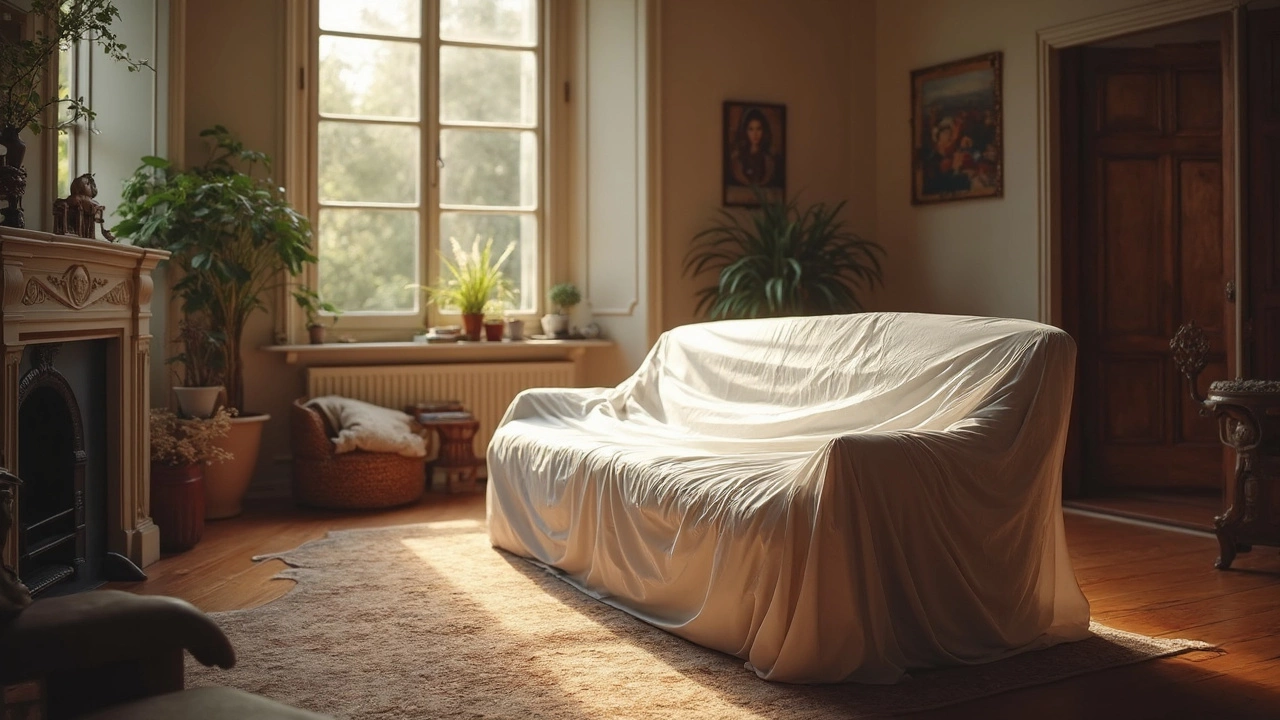Storing a couch might seem simple, but there are key steps you'll want to take to ensure it remains in top shape. Wrapping your couch before storage can prevent damage from moisture, pests, and dust. Understanding different wrapping materials and techniques can save you from a ruined couch. This guide will explore why wrapping is essential, what materials work best, and how to do it effectively.
Wrap Furniture – Simple Slipcovers & Upholstery Ideas
Ever looked at a tired sofa and wished you could give it a fresh look without buying new? Wrapping furniture is the shortcut most people miss. A slipcover or upholstery wrap can change colour, texture, and style in a single weekend. The best part? It’s cheaper than a new piece and often protects the original fabric, extending the life of your furniture.
Before you rush to the store, think about why you want to wrap. Are you after a seasonal colour shift, an easier way to clean, or simply a style upgrade? Knowing the goal helps you pick the right material and fit method. For families with kids or pets, a durable, stain‑resistant fabric makes life a lot smoother. If you love changing trends, a light cotton or linen gives you the freedom to swap colours each season.
Choosing the Right Fabric for Your Wrap
Fabric choice matters more than you might think. Look for a blend that matches your daily wear. Poly‑cotton mixes are popular because they combine softness with easy cleaning. If you need heavy‑duty protection, consider a microfiber or polyester blend that repels spills. For a luxe feel, a velvet or chenille adds depth, but remember it needs gentle care.
Colour matters too. Dark shades hide stains, while light hues open up a small room. If your décor already has bold accents, a neutral wrap keeps the balance. Don’t forget pattern – a subtle stripe can disguise wear, while a bold print makes a statement piece.
Step‑by‑Step Fit and Care Tips
Measuring is the secret to a clean look. Grab a measuring tape and note the length, width, and depth of cushions and the seat. Add a few centimeters for overlap; this prevents gaps when you sit down. Many slipcovers come with elastic corners – those are your friends for a snug finish.
When you’re ready to dress the furniture, start with the largest piece first. Slip the cover over the back, pull it down, and smooth it out. Tuck the elastic corners under the seat cushions and pull tight. If the cover has straps, secure them to keep the fabric from shifting.
Maintenance is straightforward. Most machine‑washable covers survive a cold wash; just follow the label. For quicker spills, a damp cloth wipes away most marks. Rotate the cover every few weeks to even out wear.
Saving money doesn’t mean sacrificing style. Check local home‑ware shops or online retailers for sales. Many offer matching pillow covers, so you can create a coordinated look without buying a whole new set.
Finally, don’t overlook the environmental benefit. Re‑upholstering with a wrap reduces waste and keeps your favourite pieces in use longer. It’s a win for your wallet and the planet.
So next time you stare at an old armchair, remember: a simple wrap can turn it from drab to fab in just a few hours. Pick a fabric you love, measure carefully, and enjoy a fresh look that’s both stylish and practical.
